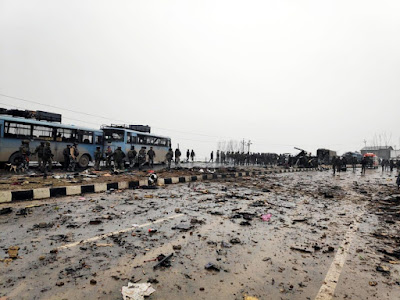Global competence is “the disposition and capacity
to understand and act on issues of global significance. “It is rooted in our
changing reality and is constantly evolving with the world.
The Global Competence Matrix, developed by the GCC
founding partners, comprises core concepts, skills, values, attitudes and
behaviors, including: appreciation for cultural differences, ability to
understand and consider multiple perspectives, capacity for highly critical and
analytical thinking, comfort with ambiguity and change, and understanding the
complexity of global issues. The Matrix is used as a guideline with the
expectation that these components will change over time as a more diverse
cross-section of educators and learners contribute to the process.
Global Competence
The California Global Education Project (CGEP) has
adopted the four domains, or capacities, for global competence
presented by CCSSO & Asia Society (2011) to foster awareness and curiosity
about how the world works, which is informed by disciplinary and
interdisciplinary insights. CGEP agrees that globally competent students are
able to:
- Investigate the world beyond their immediate environment, framing significant problems and conducting well-crafted and age-appropriate research.
- Recognize perspectives, others’ and their own, articulating and explaining such perspectives thoughtfully and respectfully.
- Communicate ideas effectively with diverse audiences, bridging geographic, linguistic, ideological, and cultural barriers.
- Take action to improve conditions, viewing themselves as players in the world and participating reflectively.
Develop Global Competence
CGEP identifies the
following specific indicators, or competencies, within these four domains for
educators, students, parents/guardians, and community partners to use for
themselves and for instructional purposes in developing global competence.
INVESTIGATE THE WORLD
Pose questions to better
understand issues and perspectives
Identify and suspend
assumptions and judgements
Recognize the value of
each person in a global community
Explore the world with curiosity
RECOGNIZE PERSPECTIVES
- Keep an open mind
- Empathize with others
- Identify my personal perspectives and influences
- Examine the perspectives and influences of others
- Consider multiple perspectives and opinions
- Analyze cultural influences, connections, and contexts
COMMUNICATE IDEAS
- Share ideas and context with diverse audiences
- Actively listen to others
- Engage in civil discourse
- Consider the audience and communicate appropriately
TAKE ACTION
- Use evidence and values to guide plans
- Assess options and consider the potential impact of planned actions
- Apply creative thinking and solve problems
- Capitalize on available resources and partnerships
- Persist through challenges
- Act and reflect individually and collaboratively
- Act with respect for individual dignity, differences, and human rights
- Contribute to a better world
Global Competence is the disposition and knowledge
to understand and act on issues of global significance (CCSSO & Asia
Society). Those issues are identified in the Sustainable Development Goals
adopted by countries to end poverty, protect the planet, and ensure prosperity
for all (United Nations). Globally competent individuals are life-long learners
who understand these issues and have an appreciation for cultural differences,
an ability to understand and consider multiple perspectives, use critical and
comparative thinking skills as well as problem-solving abilities, and are
comfortable with ambiguity and change (World Savvy).
This course engages educators in the global
competence movement and the exciting instructional opportunities of a global
education focus. The course is designed to show how developing global
competencies is within grasp and does not increase educators’ instructional
loads. Teaching with a global focus also successfully engages students and
prepares them for college, work, and life. This course is an excellent way to
begin building the foundations of a global competence culture in the classroom
or during out-of-school time.
This course serves as the introduction to the Teaching
for Global Competence program and is free of charge.
Global Competence Matrix
Globally competent individuals possess and apply the
following qualities, characteristics, and abilities to learning about and
engaging with globally significant issues. Educators that aspire to help
students become globally competent must both develop these attributes in
themselves and find ways to foster them in students.
Core Concepts
World events and global issues are complex and
interdependent
The current world system is shaped by historical
forces
One’s own culture and history is key to
understanding one’s relationship to others
Multiple conditions fundamentally affect diverse
global forces, events, conditions, and issues
Skills
Investigates the world by framing questions,
analyzing and synthesizing relevant evidence, and drawing reasonable
conclusions that lead to further enquiry
Recognizes, articulates, and applies an
understanding of different perspectives (including his/her own)
Selects and applies appropriate tools and strategies
to communicate and collaborate effectively
Listens actively and engages in inclusive dialogue
Is fluent in 21st century digital technology
Demonstrates resiliency in new situations
Applies critical, comparative, and creative thinking
and problem solving
Attitudes & Values
Openness to new opportunities, ideas and ways of
thinking
Desire to engage with others
Self-awareness about identity and culture, and sensitivity
and respect for differences
Valuing multiple perspectives
Comfort with ambiguity and unfamiliar situations
Reflection on context and meaning of our lives in
relationship to something bigger
Questions prevailing assumptions
Adaptability and the ability to be cognitively
nimble
Empathy
Humility
Behaviors
Seeks out and applies an understanding of different
perspectives to problem solving and decision making
Forms opinions based on exploration and evidence
Commits to the process of continuous learning and
reflection
Adopts shared responsibility and takes cooperative
action
Shares knowledge and encourages discourse
Translates ideas, concerns, and findings into
appropriate and responsible individual or collaborative actions to improve
conditions
Approaches thinking and problem solving
collaboratively


No comments:
Post a Comment